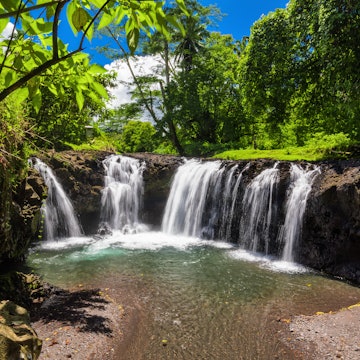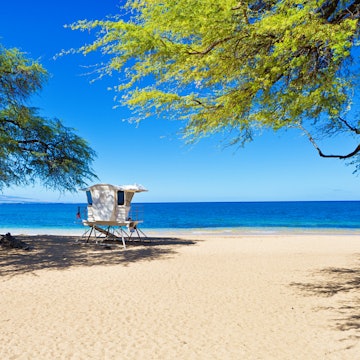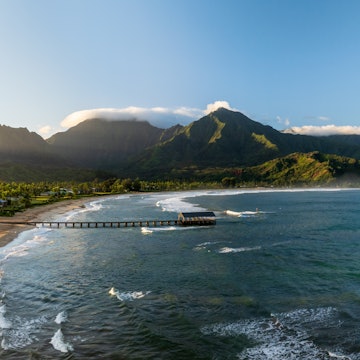

Hawai'i Tropical Botanical Garden near Hilo, Hawai'i. Faina Gurevich/Shutterstock
Hawai'i’s largest island – the Island of Hawai'i – is grand in size and scale. Filled with superlative scenery, including the world’s most active volcano (Kilauea), some of its newest land (in Puna), the largest mountain when measured from the seafloor (Mauna Loa) and some of the planet’s best night sky star viewing (atop Mauna Kea), there’s a lot more than just tropical beaches to wow visitors here.
This largely rural island in the central Pacific has been inhabited for millennia by proud and self-sufficient communities sustained by land and sea. That ethos – the island takes care of us, so we take care of the island – still thrums through residents’ daily lives. For visitors that translates to an expectation that you will also treat the land and its people with respect. Dig in by sampling the island’s literal fruits (including globally recognized Kona coffee) at abundant farmers markets and farm-to-table restaurants island-wide, frolicking with offshore wildlife including massive mantas at night, volunteering to restore native habitats, and immersing yourself in Hawaiian legends and lore at some of the oldest and most sacred sites in all of Hawai'i.
Here's what every first time visitor to the Island of Hawai'i needs to know.
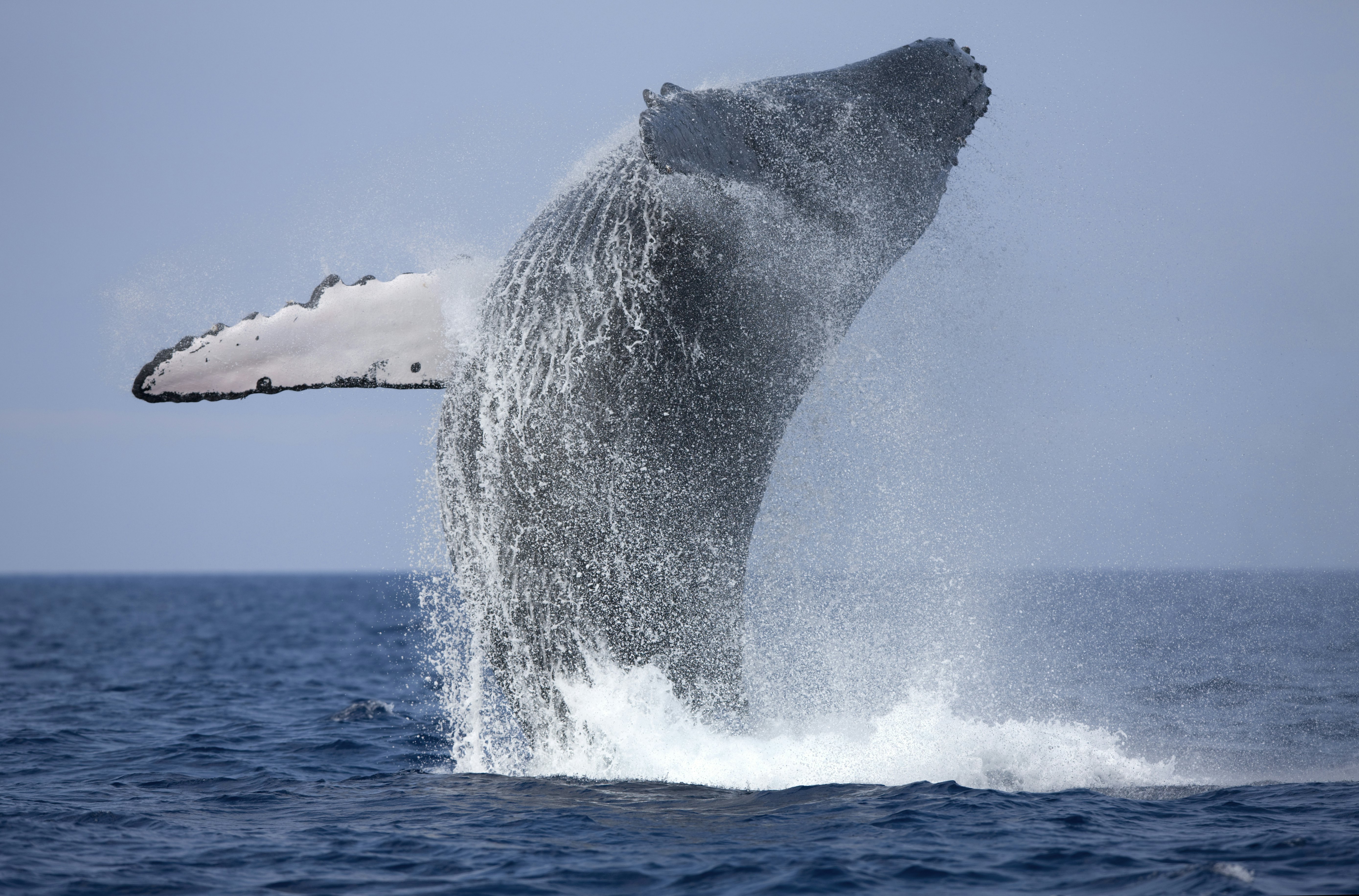
When should I visit the Island of Hawai'i?
Buffered by surrounding deep seawater and at a latitude the affords nearly equal parts night and day year-round, the Island of Hawai'i enjoys relatively little temperature fluctuation throughout the year. At sea level, most days are between 75ºF and 85ºF, and nights from 65ºF to 75ºF. However, because of the island's varied volcanic topography – from sea level to nearly 3 miles up – it experiences multiple types of weather within the same day at different locales across the island. The eastern or windward side is usually wetter than the dryer western or leeward side. And higher elevation areas are typically cooler, often with afternoon rains. The highest elevation areas can be downright chilly. It’s not unusual to experience snow atop the highest peaks, even in summer.
Though summer (May to November) brings the Pacific hurricane season with the potential for weather curveballs, winter storms are more likely to cancel scheduled boat charters, which is unfortunate because that’s also when migrating humpback whales from Alaska visit to frolic, mate and give birth in the islands’ warm offshore waters.
The island experiences high seasons during North American school holidays: spring (February to April), fall (mid-November) and winter breaks (December and January) are the priciest times to visit. Budget travelers will benefit from discounted hotel and rental car bookings in the shoulder season (September and October), as well as the low season during the North American summer (June to August). Popular festivals – including the Merrie Monarch hula competition, which brings dancers and vendors from across the islands to Hilo in mid-April, King Kamehameha Day celebrations in North Kohala and the Kona Coffee Cultural Festival in November – are all worthwhile events to plan a trip around.
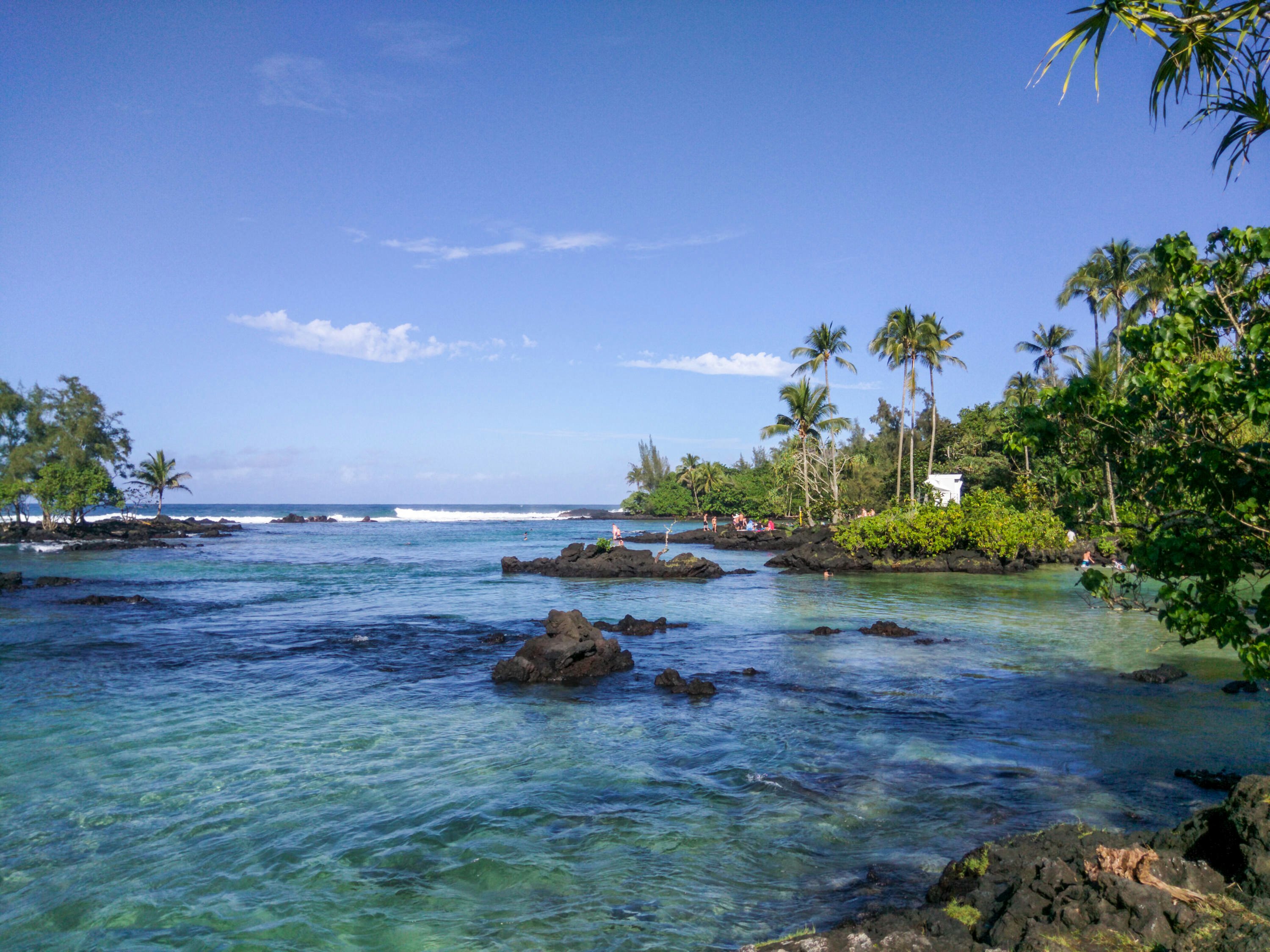
How much time should I spend on the Island of Hawai'i?
Most visitors to the island by cruise ship will spend a day in both Hilo and Kailua-Kona, but that’s far too short to get a sense of what the island has to offer. You’ll need at least four to five days to hit the highlights including Hawai'i Volcanoes National Park, Kona coffee country, northwestern beaches and scenic drives to sites including the southerly Punalu’u Black Sand Beach and Kohala Mountain Road between the northerly towns of Hawi and Waimea. A week or more will afford a deeper dive to lesser-visited areas like the Hamakua Coast and the quaint town of Honaka’a as well as exploration in the more remote reaches of Puna, home to the islands most recently created lava lands.
Is it easy to get to and around the Island of Hawai'i?
Two airports – one on each side of the island in Hilo and Kona – are the main entry points for visitors. Though both are technically international airports, many flights from the US mainland and international destinations route through Honolulu first.
A rental car is a must due to the island’s large size and the fact that the limited public bus primarily services residential areas, unless you plan to book a series of tours where someone else will be doing the driving for you. Waikoloa, the northeastern coastal region home to the bulk of the islands’ resorts, does have shuttles between properties and area shopping centers, but not to and from the airport (Kona International, 25 miles away) or into the town of Kailua-Kona a few miles even further south. Visitors based in either downtown Kona or Hilo will find both places walkable, but neither town is draw enough for most visitors to spend their entire visit there; you’ll still need that rental car to get from Hilo to volcanoes or from Kona to coffee country.
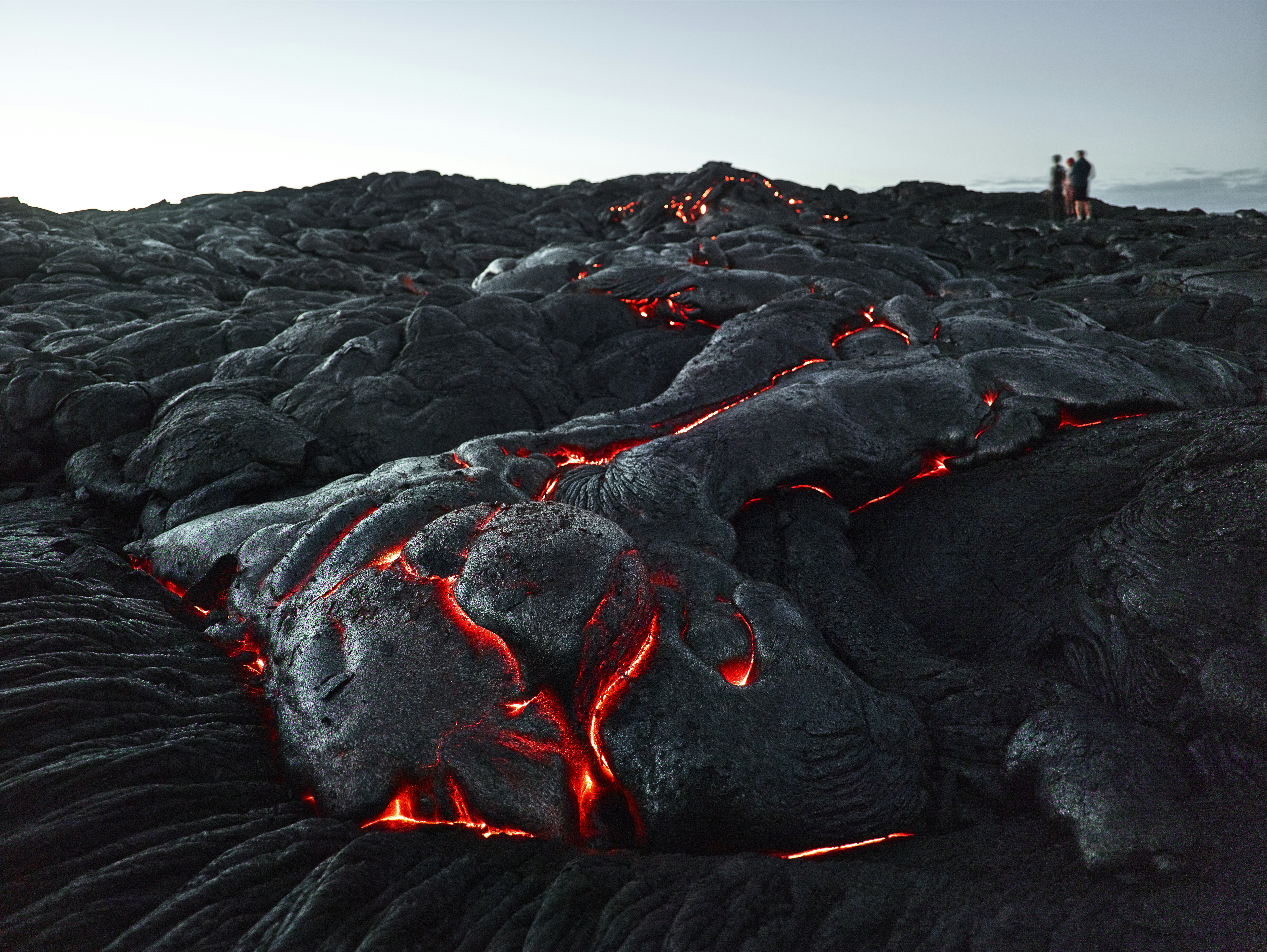
Top things to do on the Island of Hawai'i
1. Explore active and dormant volcanoes
A trip to the Island of Hawai'i would not be complete without a visit to Hawai'i Volcanoes National Park, a UNESCO World Heritage Site, which spans two volcanoes including the world’s most active (Kilauea). It’s often possible to see red hot lava roiling within a summit crater lake if an eruption is present. Check the park’s website for current eruption notices and activity as well as the best viewing spots. Most visitors walk the trail from the visitors center to the boardwalk through the steaming Sulfur Banks, meander through the remnants of an old lava tube or traverse a longer loop trail along the crater rim. But there are three very worthwhile add-ons if you have the time.
First is a drive down Chain of Craters Road. This 19-mile, down-and-back driving tour includes stops at pit craters, the site of former lava fountains and the chance to see the state bird, the nene. You’ll descend some 4000ft of elevation taking in sweeping vistas to where the lava cliffs meet the sea.
Second, in a pull-off near the bottom of Chain of Craters Rd is a mile-long hike through an old lava field the Pu’u Loa Petroglyphs, a collection of sacred and mysterious native Hawaiian rock carvings, some over 800 years old.
And, finally, back at elevation, a hike into Kilauea Iki Crater through fern forest and jungle (two to three hours; 4 miles) is well worth the trip. Not only does it give you a closer look at the terrain and some of the landscape’s more unusual features, it’s also easy to visualize what it would have been like when this crater was filled with a boiling lava lake just 65 years ago – some parts still vent steam.
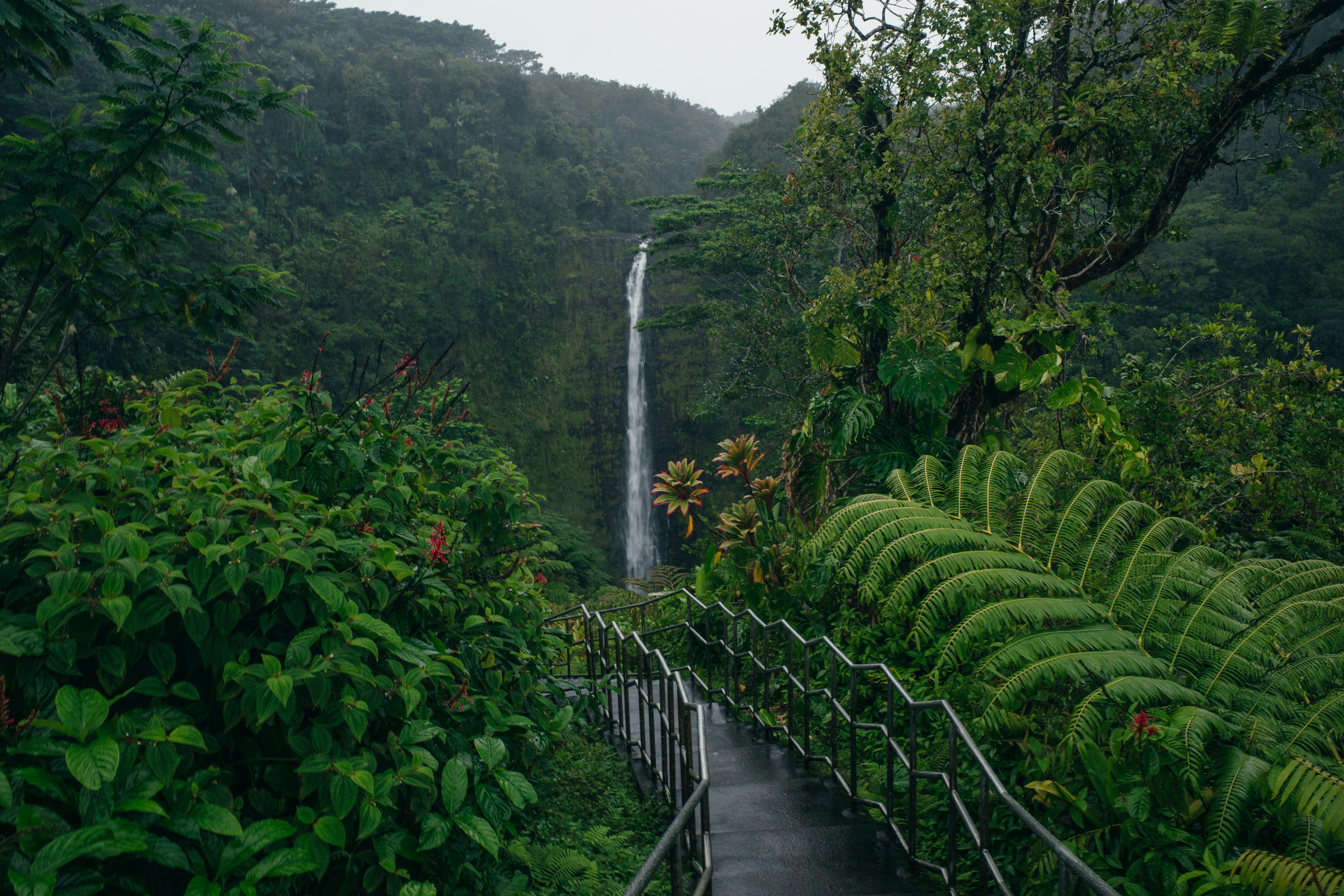
2. Take a short hike to an awe-inspiring waterfall
An easy 0.4-mile loop trail (with little elevation gain) through the verdant the Hamakua Coast jungle rewards you with views of the 442-ft cascade of ʻAkaka Falls. Afterward, get in the car and travel a bit further on the same road to the 15-acre Honamu Goat Dairy where you can pet purebred, Nubian goats and purchase a variety of products made from goat's milk.

3. Watch sea turtles soaking up the sun
You'll never forget your first time spotting green sea turtles basking on the black sands of southerly Punalu’u Beach. And though you'll be tempted to venture close, remember that they are a protected species. It's recommended to stay at least 10ft from the creatures as they warm their bodies and rest. On your way there or back, stop at Punalu‘u Bake Shop – the southernmost bakery in the US; don't miss the malasadas (chewy, sugar-coasted Portuguese fried dough).
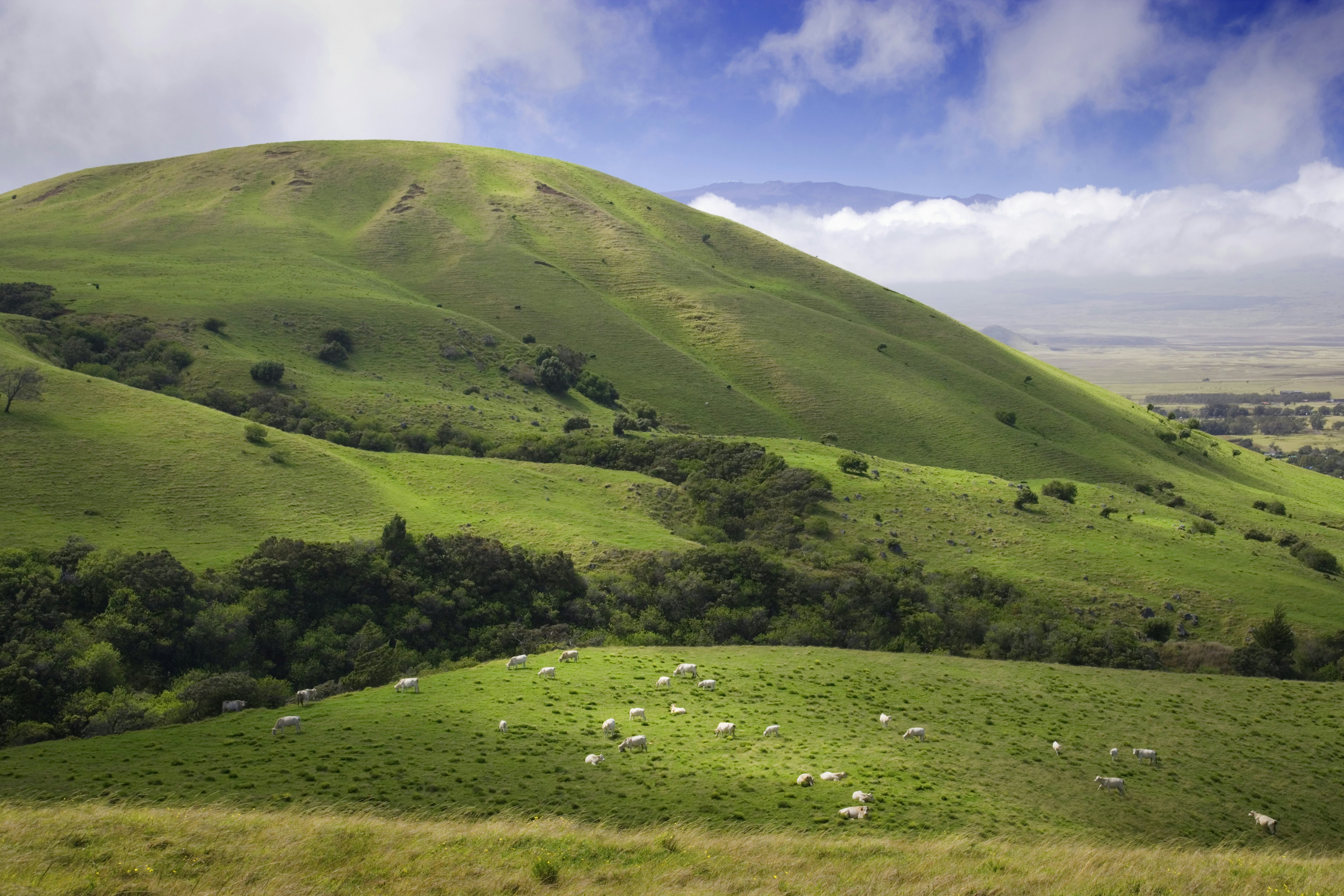
4. Experience community vibes
The Island of Hawai'i is more than just lush forests and volcanoes. Head north and inland to explore the upcountry paniolo (Hawaiian cowboy) vibe in Waimea before traversing the sky-high, ethereal and foggy ranchlands along Kohala Mountain Road to the quaint former plantation town of Hawi.

My favorite thing to do on the Island of Hawai'i
The Island of Hawai'i is a world-class destination for marine life viewing. Whether you’re a novice snorkeler, experienced diver or fearless adventure seeker – or you prefer the dry vantage of a boat – there’s an experience for you off the island’s west side. Numerous dive shops offer what has become a bucket list experience for many visitors: snorkeling (or scuba diving) at night with 10ft-plus manta rays. Lights attract plankton, mantas’ food, and draw in mantas that feast using graceful loops through the water column to filter-feed the tiny creatures within inches of gleeful viewers.
Experienced divers also can head offshore on scuba trips that focus on the plankton themselves. So-called blackwater diving takes the bold one or two miles offshore after dark to where the seafloor plummets some 5000ft below. There, divers watch migrating zooplankton – and the cast of otherworldly predators (think strange jellyfish and colorful squid) that follow them up from the deep – in the first 50ft below the surface. Thalassophobics (those fearful of deep water) would do well to keep to the mantas that hover above the reef.
Daytime charters can be just as fun. Though the previously popular practice of swimming with resident spinner dolphins is now considered illegal (they sleep during the day and keeping them awake makes them more vulnerable to predators), it’s still possible to spot them and other large marine animals (including endangered resident monk seals, migrating humpback whales, pods of pilot whales and even the occasional whale shark) on dedicated boat charters. Some of these operate zippy former military watercraft that can speed to the first sign of a sighting and put snorkelers within underwater viewing distance of porpoises and – with a trained in-water guide – sharks.

How much money do I need for the Island of Hawai'i?
There’s no question: the Island of Hawai'i is an expensive tourist destination. In addition to the typically high cost of getting here, the island economy – where most materials and goods still have to be imported – also commands higher prices for hotels, tours and dining out. Still, this isn’t the big city (read: Honolulu), and bargains and cost-saving measures can still be found if you know where to look. A tip, though: don’t skimp on experiences if you’re taking a tour – you really do get what you pay for.
Here are a few estimated costs to help you plan your budget:
Hostel: $25 to $50 (dorm bunk); $75 to $150 (private room)
Basic room for two in a hotel:): $250+
Self-catering apartment (including Airbnb): $100 to $200
Rental car per day: $50 to $100
Gallon of (non-Costco gas*): $4.75
Pound of 100% Kona Coffee: $30+
Poke bowl: $15
Dinner for two: $50+
Beer/pint at the bar: $7
2.5-hour manta snorkel experience: $130
Entry to Volcanoes National Park: $15/person or $30/private vehicle
*Costco members can save as much as $1/gallon on gas, and many island residents make a point to fill up at the island’s only location north of Kailua-Kona.











